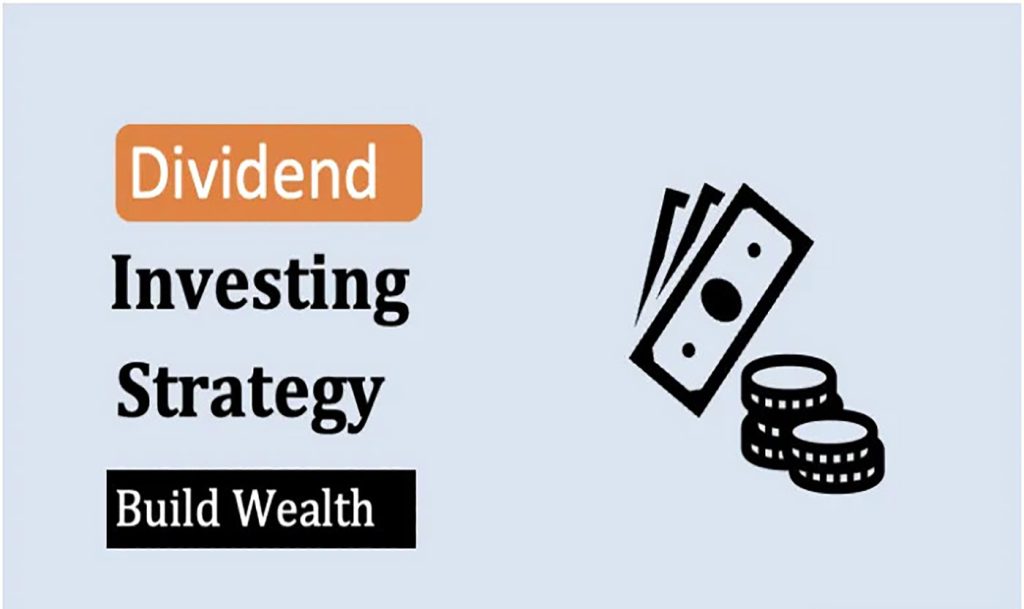In the world of investing, there are few strategies as time-tested and reliable as dividend investing. For many investors, dividends offer not just a steady stream of passive income, but also the potential for long-term wealth creation. As we step into 2024, dividend investing remains one of the most popular strategies, particularly in uncertain market environments where income stability is highly valued.
In this article, I’m going to walk you through the basics of dividend investing, how to leverage dividend income effectively, and the strategies and techniques that can help you maximize your returns. Whether you’re looking to generate income, build long-term wealth, or simply supplement your current portfolio, dividend investing has something to offer for every type of investor.
What is Dividend Investing?
At its core, dividend investing involves purchasing stocks that pay regular dividends. A dividend is a portion of a company’s earnings that is paid out to shareholders, typically on a quarterly basis. These payouts can be reinvested or used as income, depending on your investment goals.
Unlike capital gains, which are derived from selling an asset at a higher price than you bought it for, dividends offer a consistent source of income, making them attractive for income-focused investors. Additionally, dividends are often paid by well-established, financially stable companies, which makes them a safer investment option compared to more speculative growth stocks.
Why Dividend Investing Is Relevant in 2024
In 2024, dividend investing continues to be highly relevant for several key reasons:
1. Income in Uncertain Times
With interest rates still relatively low in many parts of the world, traditional savings accounts or fixed-income investments like bonds aren’t providing the yields they once did. This has led many investors to seek alternative sources of income, and dividend stocks have stepped in as a reliable solution. Whether you’re looking to fund retirement or generate income while still benefiting from capital appreciation, dividend stocks are an attractive option.
2. Stability and Consistency
Dividend-paying companies tend to be well-established and financially stable. These companies often operate in industries that have weathered multiple economic cycles and can maintain profitability, even in challenging times. This stability is crucial in an environment where stock market volatility remains a concern.

3. Dividend Growth Stocks
One of the most powerful aspects of dividend investing is the potential for dividend growth. In many cases, companies increase their dividend payouts over time, which can significantly boost the income you receive. For instance, some investors focus on “Dividend Aristocrats”—companies that have increased their dividends for 25 consecutive years or more.
4. Tax Advantages
In many countries, dividends are taxed at a lower rate than ordinary income. In the United States, for example, qualified dividends are taxed at capital gains rates, which are generally lower than the rates applied to regular income. This tax efficiency makes dividend investing even more appealing, especially for high-income earners.
The Basics of Dividend Investing
Before diving into specific strategies, let’s review some basic concepts that are essential for successful dividend investing.
1. Dividend Yield
The dividend yield is the annual dividend payment divided by the current stock price. For example, if a company pays $2 per share in dividends annually and the stock price is $50, the dividend yield would be 4% ($2 ÷ $50).
The dividend yield gives you an idea of the income you can expect from your investment relative to its price. It’s one of the first metrics to consider when selecting dividend stocks, but it’s not the only factor.
2. Dividend Payout Ratio
The dividend payout ratio is the percentage of a company’s earnings that are paid out as dividends. A high payout ratio can indicate that the company is distributing a large portion of its profits to shareholders. While a high payout ratio can be attractive for income-seeking investors, it may also signal that the company has limited room for growth or is overly reliant on dividends.
Conversely, a low payout ratio might suggest that the company has room to increase dividends in the future, making it an appealing option for long-term investors.
3. Dividend Growth Rate
The dividend growth rate is the rate at which a company has increased its dividend payments over time. A company with a consistent history of dividend growth may indicate a strong financial position and a commitment to rewarding shareholders. This is a key factor to consider if you’re interested in growing your income over time.
Top Dividend Investment Strategies
Now that we’ve covered the basics, let’s take a closer look at some dividend investing strategies that can help you maximize your returns and income.
1. The Dividend Aristocrats Strategy
One of the most well-known strategies for dividend investing is focusing on Dividend Aristocrats. These are companies that have a track record of raising their dividends for 25 consecutive years or more. In 2024, there are more than 60 Dividend Aristocrats across various sectors, including consumer goods, healthcare, and industrials.
Investing in Dividend Aristocrats provides the benefit of consistent dividend growth, as these companies have demonstrated their ability to maintain stable earnings and dividends even during market downturns. They tend to be well-established, financially sound companies with strong competitive advantages.
Tip: Some notable Dividend Aristocrats to consider are companies like Procter & Gamble, Coca-Cola, and Johnson & Johnson. These companies not only provide a steady income stream but also a history of growing their dividends over time, which can increase your wealth through reinvested dividends.
2. The High-Yield Strategy
Another popular strategy is to focus on high-yield dividend stocks. These are stocks with a high dividend yield, often above the market average. While these stocks can offer attractive income, it’s essential to assess the sustainability of the dividend. A high yield may look appealing, but if a company is paying out more than it can afford, it could cut or eliminate its dividend in the future.
To find high-yield dividend stocks, you can use screening tools on platforms like Yahoo Finance or Morningstar. You’ll want to look for companies that have strong cash flow, low debt levels, and a history of paying sustainable dividends.
Tip: Keep in mind that a high dividend yield could be a red flag if the company’s stock price has dropped significantly. This could indicate underlying problems that may impact the future of the dividend.
3. Dividend Growth Investing
Dividend growth investing focuses on companies that have a history of regularly increasing their dividends. These companies may not always have the highest yields, but they provide the potential for steady income growth over time.
This strategy works particularly well for long-term investors who are looking for consistent income that increases over the years, allowing their wealth to compound. The key is to find companies that have a solid history of dividend increases and are likely to continue that trend.
Tip: Some great dividend growth stocks to consider include Visa, Microsoft, and McDonald’s, all of which have demonstrated a strong commitment to growing their dividends.
4. Dividend Reinvestment Plans (DRIPs)
A dividend reinvestment plan (DRIP) is an automatic way to reinvest your dividends into additional shares of the company’s stock. Many dividend-paying companies offer DRIPs, which allow you to purchase more shares without paying any commissions or fees. Reinvesting dividends allows your investment to grow exponentially over time through the power of compounding.
For instance, if you own shares of Apple and receive dividends, you can choose to automatically reinvest those dividends back into more Apple shares, increasing your holdings with each payment.
Tip: Many online brokers, such as TD Ameritrade or Fidelity, offer DRIPs for investors who prefer a hands-off approach to growing their portfolios.
5. Sector Diversification
Diversifying across different sectors is a smart way to mitigate risk while pursuing dividend income. By investing in stocks from various industries—such as utilities, consumer staples, healthcare, and technology—you can protect yourself from sector-specific downturns that may affect one industry more than others.
For example, the utility sector is often considered recession-proof because people still need electricity and water, even in tough economic times. On the other hand, tech stocks might offer faster growth but are often more volatile. A diversified dividend portfolio can help you balance these risks.
Tip: Look for exchange-traded funds (ETFs) that focus on dividend-paying stocks, such as Vanguard Dividend Appreciation ETF (VIG) or Schwab U.S. Dividend Equity ETF (SCHD). These ETFs provide exposure to a broad array of dividend stocks, helping you achieve diversification with one investment.
Common Pitfalls to Avoid in Dividend Investing
While dividend investing can be a highly rewarding strategy, it’s important to avoid some common mistakes:
1. Chasing High Yields Without Research
As mentioned earlier, high yields can be tempting, but they often come with risks. Always research the sustainability of a company’s dividend and its overall financial health before investing in a high-yield stock. A high yield might be a sign of trouble if the company is struggling to maintain its payouts.

2. Ignoring Dividend Growth Potential
Focusing solely on high yields can cause you to overlook companies that have a strong track record of dividend growth. Over time, reinvested dividends can lead to significant wealth creation, so prioritizing long-term dividend growth over high initial yields can be more beneficial.
3. Neglecting Tax Implications
Dividends are taxable, so you’ll want to be mindful of the tax implications when investing in dividend-paying stocks. In some cases, dividends can be taxed at a higher rate depending on your income level and tax bracket. To minimize taxes, consider holding dividend stocks in tax-advantaged accounts like an IRA or 401(k), if possible.
Dividend investing remains one of the most reliable and rewarding strategies in the world of investing. Whether you’re aiming for a steady stream of income or long-term wealth accumulation, leveraging dividends can help you reach your financial goals.
By following the right strategies, staying disciplined, and diversifying your investments, you can maximize the power of dividends and create a portfolio that generates consistent income for years to come. With platforms like Yahoo Finance, Morningstar, and Fidelity, you can access tools to track dividend stocks, analyze their performance, and stay on top of market trends.
So, the next time you’re looking to build or grow your portfolio, remember that dividend investing might just be the strategy that works best for you. It offers both the security of income and the potential for long-term growth, making it an essential component of a well-rounded investment plan.



